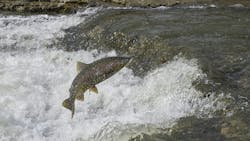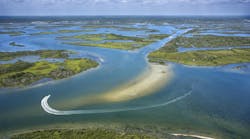California sets emergency minimum flows for Scott, Shasta rivers
California’s State Water Resources Control Board announced that it has readopted an emergency regulation that establishes minimum flow requirements for the Scott and Shasta rivers. The regulation will ensure supplies for human health and livestock needs, protect imperiled fish, and encourage voluntary water use reduction.
The Scott and Shasta rivers, key tributaries to the Klamath River, continue to experience prolonged impacts from multiple years of drought. The rivers are crucial water sources for Siskiyou County and are of immense economic, ecological and cultural importance to tribes and the surrounding communities. They also are important habitat for federally and state-threatened coho salmon, culturally and commercially significant Chinook salmon and culturally important steelhead trout.
While precipitation in the Klamath watershed over the previous year was above average, it failed to reach the record-breaking levels observed in other parts of the state. Flows in both rivers dropped below drought-protection levels set by the State Water Board in 2021 and 2022.
“The State Water Board adopted similar regulations to protect key fisheries over the past two years,” said Board Chair E. Joaquin Esquivel. “The hydrology of these watersheds is complex, but the cooperation among all parties to find solutions that balance the needs of communities and the environment has been encouraging. I am hopeful that this regulation continues to drive engagement toward collaborative solutions.”
The board’s decision was issued after months of public engagement, including a hearing Aug. 15 to consider a petition filed May 23 by the Karuk Tribe of California, Environmental Law Foundation, Pacific Coast Federation of Fishermen’s Associations and Institute of Fisheries Resources asking the board to establish permanent minimum flows on the Scott River.
At the hearing, the board included the Shasta River in the discussion due to rapid and alarming flow decreases observed when the previous flow regulation expired at the end of July. The board directed staff to move forward with an emergency regulation re-establishing minimum flows in the Scott and Shasta watersheds; develop science and options that could support long-term flows; and present board members with potential options and approaches.
To keep interested parties informed of potential updates to the emergency regulation, staff held multiple webinars and listening sessions, including a workshop on Oct. 6 to solicit input on the state of the fisheries, the minimum instream flows, groundwater local cooperative solutions and data needs.


